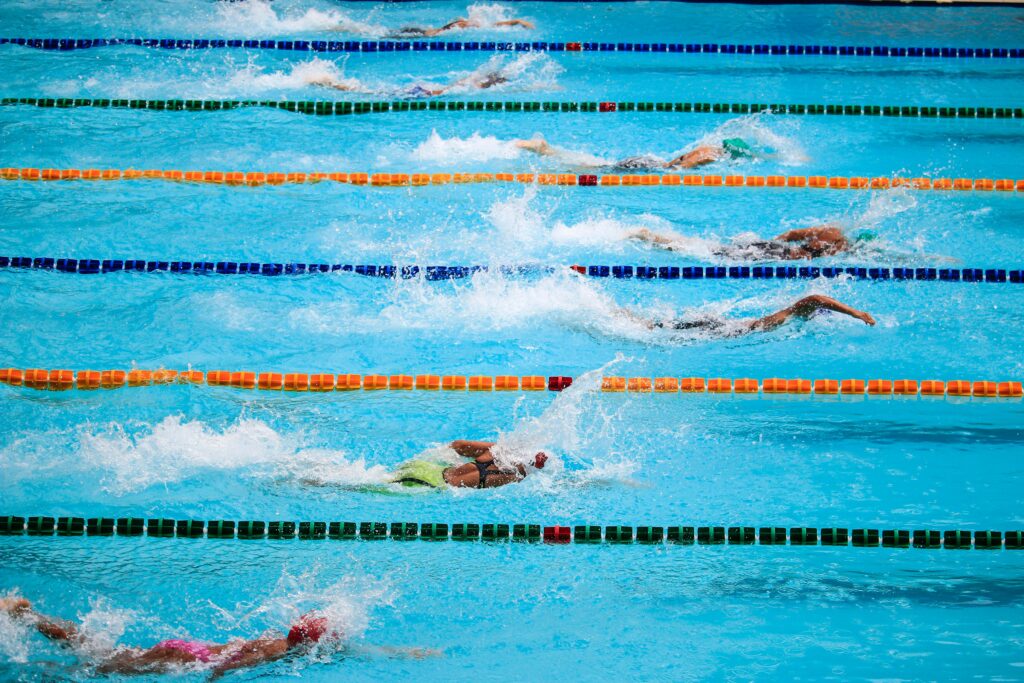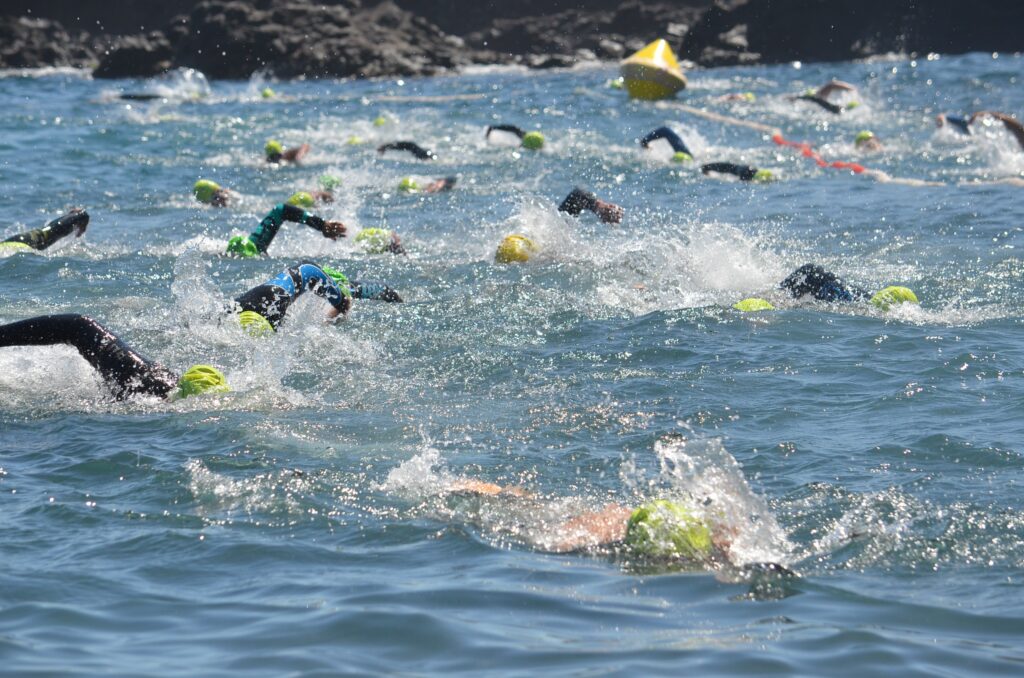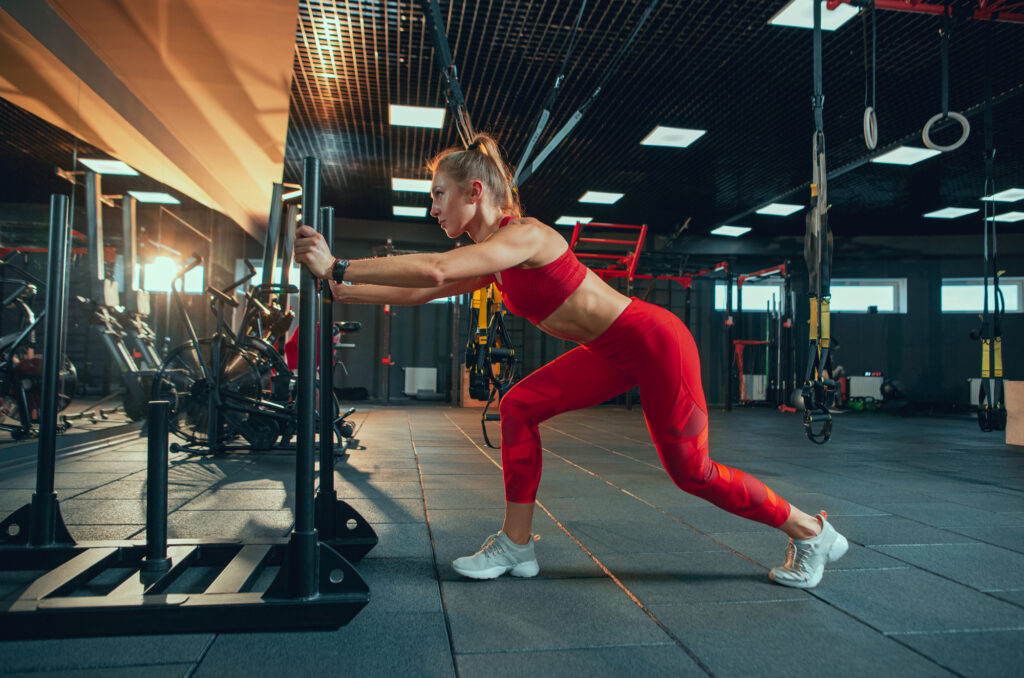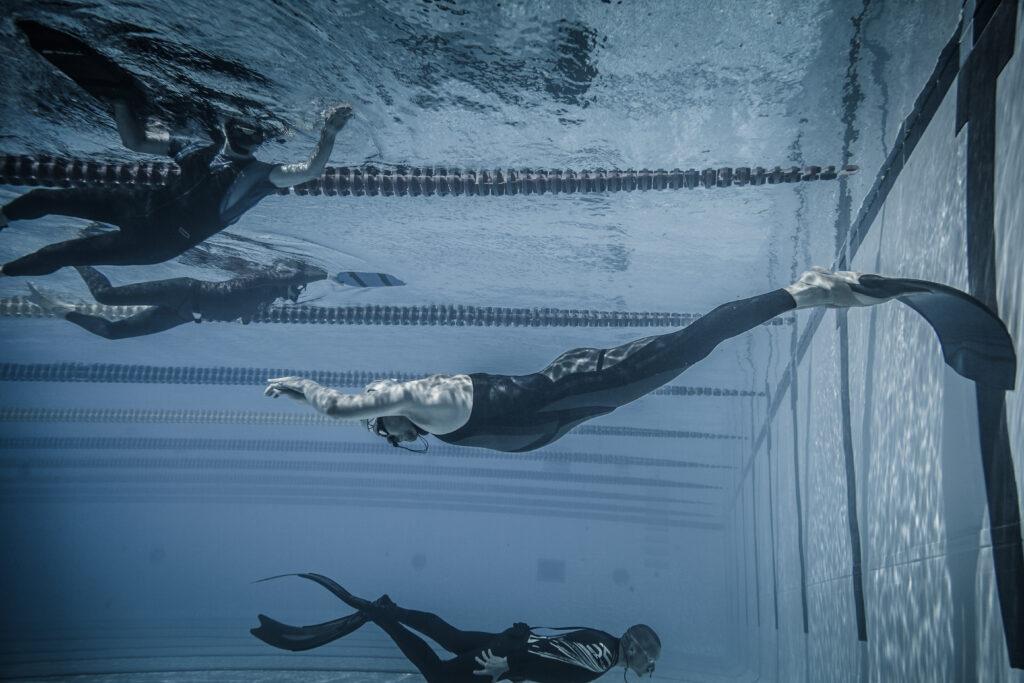Improving endurance in the butterfly stroke is a common goal for competitive swimmers, as it is arguably the most physically demanding stroke in swimming. The key to increasing one’s capability to maintain the butterfly stroke over longer distances lies in efficiency and technique. Meticulous attention to the correct form of the stroke can conserve energy, which directly impacts a swimmer’s endurance. This involves mastering the timing of the breath, kick, and arm movements, as well as fine-tuning body position in the water.
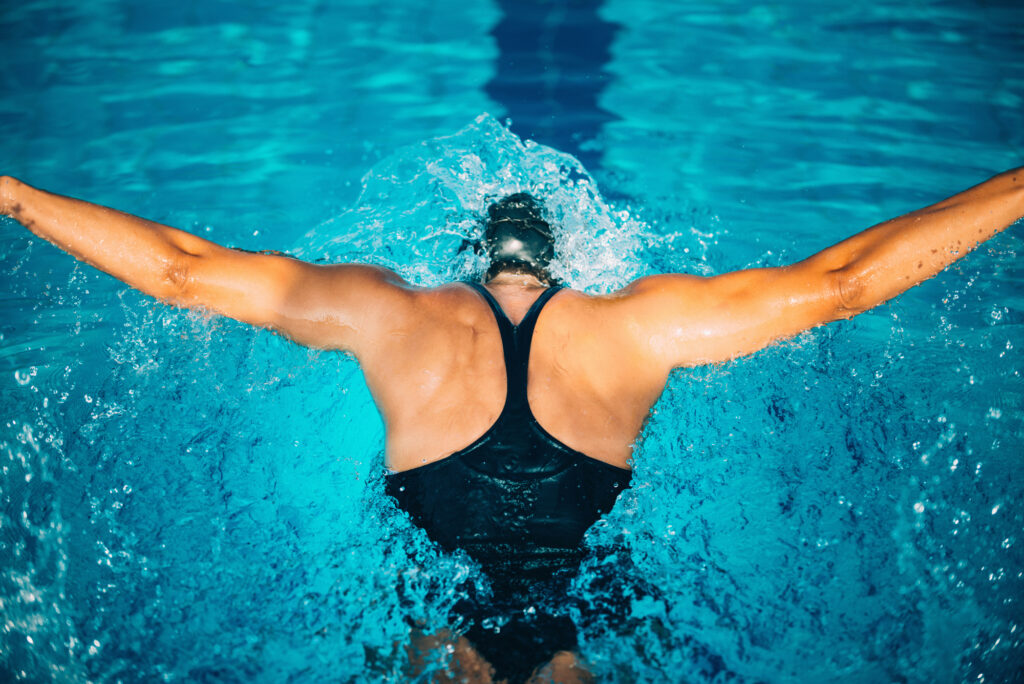
Specific dryland exercises tailored to the muscular demands of the butterfly stroke can also enhance a swimmer’s endurance. Strengthening the core, shoulders, and back muscles will support better technique and power in the water. Incorporating exercises such as hip bridges and pull-ups can improve the overall conditioning necessary for sustained performance.
Lastly, endurance is not built overnight but through consistent and progressive training routines. Swimmers can introduce drills that build endurance incrementally, such as adding one more butterfly stroke every 25 metres. This methodical increase in workload can help swimmers develop the stamina needed for extended sessions of the stroke, while ensuring they do not compromise on form. By integrating variety and progression into workouts, swimmers can systematically extend their butterfly swimming distances without excessive fatigue.
Understanding the Butterfly Stroke
The butterfly stroke is renowned for its distinctive style and intensive energy demands. It combines a dolphin-like kick with a simultaneous overhead arm movement.
History and Evolution of the Butterfly Stroke
The butterfly stroke has a storied past, having evolved from the breaststroke in the 1930s. Officials recognised it as a distinct style in 1952. This stroke has undergone significant transformation as swimmers and coaches have refined techniques to optimise performance and efficiency in the water.
Key Components of Butterfly Stroke Technique
Proper butterfly stroke technique is critical for reducing fatigue and improving endurance. The technique involves a symmetrical arm movement with both arms moving simultaneously over the water and re-entering at the same point in front of the swimmer. The legs perform a dolphin kick, with feet together, kicking twice for every arm cycle. The timing of the kick and pull is essential, as they provide propulsion when synchronised correctly. Breath timing is also crucial; it should be quick and occur during the arm pull phase to maintain the stroke’s rhythm.
Mastering the Basics
Improving endurance in the butterfly stroke hinges upon the refinement of technique. Swimmers must ensure correct body positioning, a powerful kick, and precise arm movements to conserve energy and enhance performance.
Positioning Your Body Correctly
Proper body position is crucial in the butterfly stroke. Swimmers should maintain a horizontal position as close to the surface of the water as possible. The head should align with the spine and only lift slightly during breathing to avoid drag. It is essential to keep the body streamlined to minimise resistance and maintain speed.
Perfecting the Butterfly Kick
The kick powers the butterfly stroke and requires coordination of the legs and hips. Swimmers begin with the feet together, toes pointed, and initiate the kick from the hips, creating a wave-like motion through the legs. They should practise two kicks per arm cycle — one as the hands enter the water and the second during the arm pull.
Arm Movement Fundamentals
The arm action in the butterfly is simultaneous and symmetrical. Swimmers extend their arms forward above the water and enter with the thumbs first, avoiding splashing. Following entry, they should press the arms down and outwards in a keyhole pattern, providing propulsion. It is vital to keep the arms relaxed yet powerful throughout the stroke to build and maintain endurance.
Developing Effective Breathing Patterns
Improving endurance in the butterfly stroke relies heavily on developing effective breathing patterns. Swimmers must coordinate their breathing with the natural rhythm of their strokes to maintain efficiency and minimise fatigue.
Breathing: The swimmer should breathe when their hands pass their shoulders during the pulling phase. It is crucial to exhale underwater and take a quick breath as the arms recover. This technique ensures continuous oxygen flow and better stroke consistency.
Head Position: Maintaining a low head position is vital. The head should only rise enough for the mouth to clear the water, and swimmers should aim to keep their chin close to the surface. Excessive lifting of the head can disrupt stroke rhythm and lead to early fatigue.
Rhythm: Synchronising breaths with the undulating motion of the butterfly helps maintain a consistent pace. Swimmers should practice breathing every second or third stroke to build lung capacity and endurance. Training with varied breathing patterns can also prevent over-reliance on one side and promote muscle balance.
Timing: Timing is critical for effective breathing in butterfly. A well-timed breath coincides with the natural body movements during the stroke cycle. Swimmers can learn more about refining their timing by studying various butterfly breathing techniques.
Incorporating these breathing strategies into regular training will significantly improve a swimmer’s endurance and performance in the butterfly stroke. Coaches often recommend specific drills that focus on each aspect of breathing to help swimmers internalise these patterns.
Enhancing Arm Strength and Technique
Optimising arm strength and technique in the butterfly stroke is critical for improving endurance. A swimmer must focus on refining the arm cycle, amplifying the strength of the arm pull, and ensuring smooth arm recovery to maintain consistent performance over time.
Optimising the Arm Cycle
The arm cycle in butterfly stroke is a continuous motion that requires coordination and timing. Swimmers should aim to synchronise their arms to work together throughout the stroke. It begins with the catch, the phase where the hands start to pull against the water, and should involve both arms moving in unison to maximise efficiency.
Strengthening the Arm Pull
The arm pull is central to generating propulsion in the butterfly stroke. Swimmers need to focus on using their forearm and palm as a paddle, keeping their wrists firm and elbows high to create a powerful catch. Strengthening exercises for the triceps, shoulders, and lats can contribute greatly to enhancing the power of each pull.
Improving Arm Recovery
Efficient arm recovery ensures that the swimmers maintain their momentum and prepare for the next stroke cycle without wasting energy. Swimmers should keep their arms relaxed but streamlined during the recovery phase, allowing them to enter the water smoothly to reduce drag and prepare for the catch phase. Incorporating dry-land shoulder exercises can help in improving the flexibility and strength required for effective arm recovery.
Building Core and Lower Body Strength
To excel in the butterfly stroke, swimmers must focus on enhancing core strength and lower body power, as these areas are fundamental to achieving propulsion and maintaining a streamlined position in the water.
Targeting Key Muscle Groups
Core and lower body strength are essential for the rhythmic undulations required in the butterfly stroke. The key muscle groups to target include the abdominals, obliques, lower back, hips, quadriceps, hamstrings, and gluteal muscles. The hips, especially, are pivotal for generating the powerful dolphin kick that propels swimmers through the water.
Incorporating Dryland Exercises
Dryland exercises play a crucial role in a swimmer’s training regimen, allowing for specific conditioning away from the pool. Performing exercises like the plank can greatly improve one’s core stability. Additionally, incorporating squats and lunges can enhance the strength in the quadriceps and hamstrings, which are vital for a powerful kick.
Advancing with Butterfly Drills
Once foundational strength is built, swimmers can progress to butterfly-specific drills that mimic the movements of the stroke. Butterfly drills, such as the dolphin kick and vertical kicking, will further develop a swimmer’s core and hips, directly translating to an improvement in endurance and efficiency while performing the butterfly stroke.
Refining Kick and Undulation
Improving endurance in butterfly stroke hinges on mastering the kick and undulation. These components are critical in creating a rhythmic and efficient movement through the water.
The Role of the Dolphin Kick
The dolphin kick serves as the powerhouse behind the butterfly stroke. They should initiate a wave-like motion from the core, travelling down to the toes, making the whole body work in unison. Swimmers often focus on the downbeat, where the feet push against the water to generate propulsion. However, the upbeat, where the feet move upwards, is equally important to maintain rhythm and continuous forward motion. Core strength is instrumental in maintaining this motion and preventing early fatigue.
Executing a Powerful Undulation
Executing a powerful undulation is about ensuring a fluid wave-like motion through the body. This motion begins at the chest, extends through the hips, and ends with a flick of the toes. Kicking motion should be smooth, with the legs close together to maximise efficiency and speed. To refine undulation, swimmers should practice maintaining their body as close to the surface as possible. This minimises drag and leverages the power of each kick fully. It’s essential to align the timing of the undulation with the arm strokes to preserve energy and enhance endurance.
Fine-Tuning Coordination and Rhythm
To elevate one’s butterfly stroke performance, it is paramount to refine the coordination between arm and leg movements as well as to hone the rhythm of the stroke timing. Such attentiveness to detail results in a more efficient stroke and improved endurance.
Synchronising Arm and Leg Movements
In the butterfly stroke, the symphony of moving parts must be finely tuned, with a particularly critical relationship existing between one’s arms and legs. They should initiate their movements in a carefully coordinated manner. As the arms enter the water, the legs should simultaneously begin their kick. This synchronicity ensures that the body maintains a horizontal position, reducing drag and conserving energy. Adopting a drill-focused approach, such as one arm butterfly swimming, can sharpen this synchrony.
Developing Stroke Timing
The timing of each stroke cycle is the essence of a smooth butterfly stroke. It dictates the rhythm and ultimately, the effectiveness of the swim. Ideally, the swimmer’s arms should sweep down and back up in a fluid motion, seamlessly transitioning to the recovery phase overhead, while the legs perform a powerful dolphin kick. The breathing pattern should also be woven into this timing, with breaths taken quickly between arm strokes to not disrupt the flow. Swim Teach offers insights on ensuring breathing patterns do not disturb the stroke’s rhythm, which can be pivotal for maintaining stamina throughout longer swims.
Improving Endurance and Power
To excel in the butterfly stroke, competitive swimmers must emphasise both endurance and power. Dedicated training regimens and the understanding of stroke mechanics play a crucial role in enhancing these attributes.
Effective Training Strategies for Endurance
One can’t overstate the importance of developing endurance for the butterfly stroke. Incorporating drill variations into one’s training can aid in boosting endurance subtly. For instance, the arena swimming blog suggests a drill progression method, adding or removing one butterfly movement per length to gradually increase the physical demand. Additionally, interval training, alternating between high-intensity swims and active recovery periods, helps swimmers build stamina and adapt to the rigorous demands of a race. Emphasising continuous swimming over extended distances is also essential, as it conditions the body to sustain energy output for the duration of the event.
Increasing Speed and Power
Speed and power in the butterfly stroke are directly related to the swimmer’s strength and technical proficiency. Plyometric exercises, such as jumping squats and box jumps, can augment a swimmer’s explosive power and translate to faster starts and turns. Meanwhile, resistance training with paddles or fins can increase upper body and leg strength, contributing positively to the stroke’s pulling and kicking power. To fine-tune the technical aspects, focusing on drills like the one arm butterfly drill enhances coordination and rhythm, vital for achieving peak performance as outlined by swimswam.com.
Refinement of breathing patterns is also a key aspect; minimising the lift of the chin during breaths reduces drag, conserving energy and aiding in maintaining speed over longer distances. Throughout all drills and training exercises, maintaining a strong technique is imperative to prevent injury and ensure that power is converted efficiently into forward motion.
Technical Drills and Advanced Techniques
In swimming, particularly within the butterfly stroke, technique and endurance are closely interlinked. Proficiency in technical drills and the application of advanced techniques are essential for advanced swimmers aiming to enhance their performance and efficiency in the water.
Utilising Butterfly Drills for Technical Proficiency
Technical drills are foundational for any butterfly swimmer looking to fine-tune their stroke and improve endurance. One such drill is the Butterfly Body Position Kicking Drill, which focuses on achieving a high body position and correct kicking mechanics, thus reducing resistance in the water. This drill can be simplified for beginners, or adapted to increase difficulty for advanced swimmers.
One-arm butterfly is another pivotal drill that encourages swimmers to concentrate on the pull phase of their arm while maintaining a balanced body roll and a steady kick. By alternating arms, swimmers gain a better appreciation of the mechanics involved in each arm movement and how it contributes to their overall swimming rhythm.
Applying Advanced Swimming Techniques
Advanced swimming techniques in butterfly often involve refining the full stroke to optimise performance. Swimmers should focus on maintaining a straight-arm recovery to enhance their propulsion and to couple their arms effectively with the undulating movement of the dolphin kick.
Butterfly swimmers can also use Advanced Endurance Drills to build stamina. An example of such a drill is a combination set where swimmers add one butterfly stroke every 25 metres until a full length is swum in butterfly, and then decrease one stroke per length subsequently. This drill, emphasising progressive overload, is beneficial in increasing a swimmer’s endurance without sacrificing technique.
Incorporation of these technical drills and advanced techniques allows butterfly swimmers to improve their efficiency and stamina, making it possible to maintain the energy-sapping butterfly stroke for longer durations.
Common Mistakes and Corrections
Improving endurance in the butterfly stroke is contingent on effective technique and correct form. Recognising common mistakes and undertaking corrective measures can enhance efficiency and stamina in the water.
Identifying and Avoiding Common Errors
One frequently cited error is excessive knee bending during the dolphin kick, which increases water resistance and diminishes the swimmer’s forward momentum. To maintain a more streamlined position, swimmers should focus on initiating the kick from their hips, keeping their knees slightly bent.
Another common misstep is inconsistent timing, particularly when coordinating kicks and arm movements. This disrupts the swimmer’s rhythm and can lead to early fatigue. Proper timing involves two kicks per arm cycle – one as the hands enter the water (catch phase) and another during the hands’ exit.
Implementing Corrections
To correct these errors, swimmers should focus on drills that reinforce proper form and timing. For instance, adopting a single-arm butterfly drill can aid in understanding the nuances of the stroke’s mechanics. Here, one arm remains at the side while the other executes the full stroke, accentuating the importance of body undulation and reducing the tendency to over bend the knees.
Building endurance also involves refining the stroke’s catch phase to ensure it is performed efficiently. Swimmers should strive for an early catch with a high elbow position to propel themselves forward while minimising drag.
By recognising and addressing these common faults, swimmers can develop a more efficient butterfly stroke, ultimately enhancing their endurance and performance in the pool.
Case Studies of Renowned Butterfly Swimmers

Michael Phelps, often regarded as the pinnacle of competitive swimming, revolutionised the butterfly stroke. His remarkable performance has been analysed to understand how swimmers can improve their endurance in butterfly. Phelps’s technique, combining a powerful dolphin kick with a rhythmic arm stroke, allows for efficient energy use, which is critical for endurance.
Other butterfly swimmers can draw lessons from Phelps’s discipline in training and technique refinement. Studies have indicated that successful butterflyers exhibit a greater velocity, stroke length, and stroke rate, highlighting the importance of synchronisation in arm and leg movements.
Key Attributes of Renowned Butterfly Swimmers:
- Velocity: High swimming speed maintained through rigorous training
- Stroke Length: Distance covered per stroke cycle, maximised for efficiency
- Stroke Rate: Frequency of strokes, optimised for speed without sacrificing form
Butterfly swimmers often engage in dryland exercises to enhance muscle strength and coordination. Movements like pull-ups are crucial because they target the primary muscles utilised during each swimming stroke. This cross-training aspect is integral for building the endurance necessary to maintain the intensity of the butterfly stroke over longer distances.
Finally, analysing the workouts and strategies of seasoned butterfly stroke experts is invaluable. By understanding their training regimens, upcoming swimmers can adapt similar methods to improve their own endurance. Commitment to technique, combined with strategic physical conditioning, stands out as a common trait among the most successful butterfly swimmers.
Mental and Physical Preparation for Competition
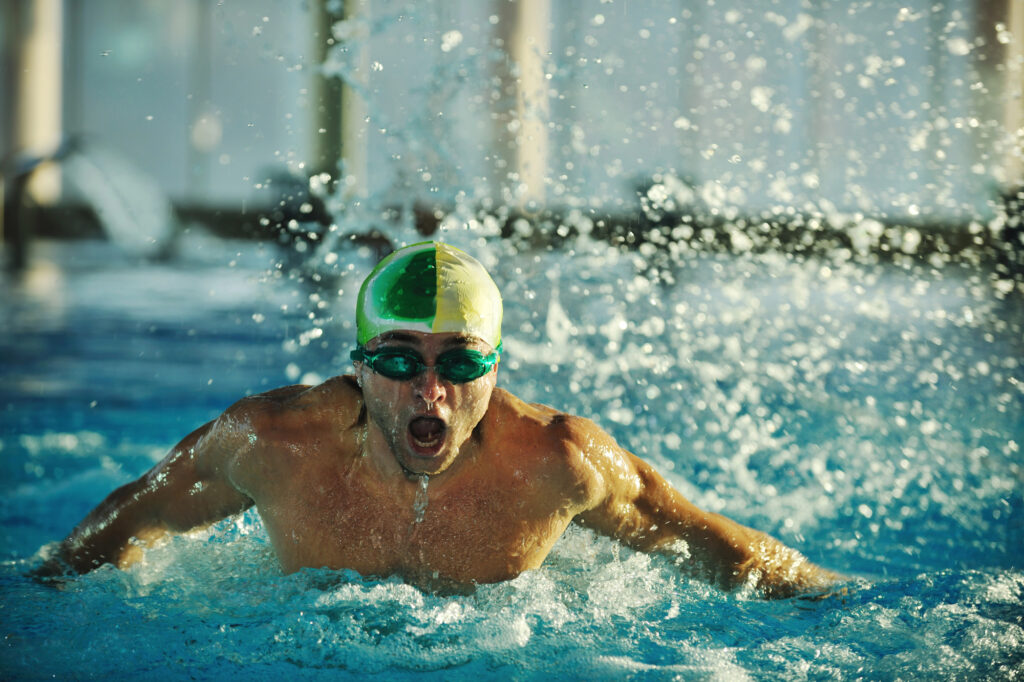
To excel in butterfly stroke races, swimmers must establish robust mental and physical preparation routines. These contribute significantly to progress and overall performance during competition.
Psychological Readiness
A swimmer’s psychological state directly influences their competitive edge. It is essential that they cultivate a positive mindset, develop stress-coping strategies, and visualise race scenarios. Competitive swimmers benefit from meditation and mental rehearsals that prime their minds for the strains of a race. They should focus on concrete goals and recall past accomplishments to reinforce self-belief.
Pre-competition Physical Routines
Physical readiness for a race hinges on meticulous pre-competition routines, which should incorporate both general and stroke-specific exercises. A combination of cardiovascular exercises, such as running, and muscle-strengthening workouts, including plank variations, can boost a swimmer’s endurance. Additionally, they should engage in dynamic stretches to increase flexibility and blood flow to muscles. This prepares their body for the intense physical demands of competitive butterfly stroke events.
Supplementary Training Techniques
To excel in the butterfly stroke, swimmers must integrate cross-training and effective nutrition and recovery strategies into their regimen. These methodologies aim to enhance overall performance, stamina, and muscle resilience.
Cross-training
Cross-training is crucial for butterfly swimmers, as it develops the muscles and endurance relevant to the stroke’s demands. They often run to improve cardiovascular fitness, which translates to better stamina in the pool. Resistance training, emphasising pull-ups and other upper body exercises, bolsters the strength needed for the powerful arm movements of the butterfly. Additionally, incorporating exercises like the Hip Bridge and Tricep Pull Downs with resistance bands can specifically target the muscle groups used in the butterfly stroke.
Nutrition and Recovery Strategies
A swimmer’s nutrition should focus on sustaining energy and repairing muscle. Consuming a balanced diet replete with proteins, carbohydrates, and fats is essential. High-protein meals account for muscle recovery and progress, with lean meats and plant-based proteins as staples. Furthermore, hydration plays a significant role; maintaining fluid intake is imperative for optimal physiological function.
Recovery is as important as the training itself. Sleep should be prioritised, allowing at least 7-9 hours for muscle repair and psychological rest. Methods such as foam rolling and stretching aid in reducing muscle soreness and improving flexibility, pivotal for an efficient butterfly technique.
Assessing Progress and Adjusting Goals
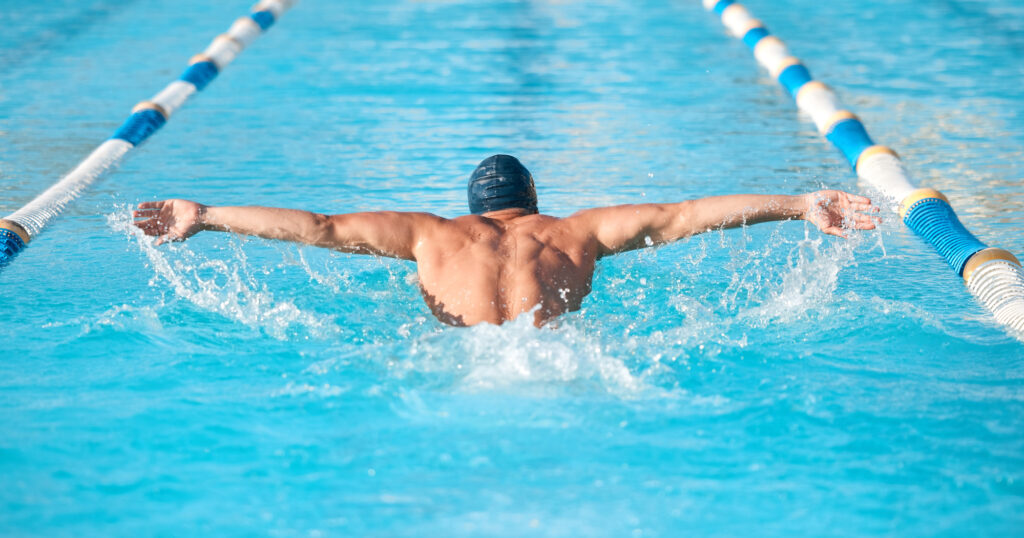
Improving endurance in the butterfly stroke entails methodical tracking of progress and adjusting goals accordingly. Swimmers can gauge improvements in their technique and form by consistently timing their swims and comparing the results over time.
Key Metrics for Monitoring Progress:
- Time taken for set distances
- Number of strokes per length
- Consistency of stroke technique over longer distances
- Breathing pattern efficiency
Advanced swimmers should document their observations for each training session in a swimming log. By reviewing their log entries, they can identify which areas of their butterfly stroke need refinement whether it’s an adjustment in strength application, technique, or overall form. Common mistakes can be noted and specific drills to correct these faults can be incorporated into subsequent sessions.
To facilitate goal realignment, swimmers should consider the following:
- Current stamina: Does the swimmer tire less easily than before?
- Pace management: Has there been an improvement in maintaining or increasing speed?
- Stroke efficiency: Are fewer strokes needed to cover the same distance?
Adjusting Goals:
A. Increase the distance swum with the butterfly stroke during training sessions incrementally, ensuring that technique does not falter.
B. Set time-based goals for distances where form consistency is already established.
C. Introduce new drills targeting identified weaknesses to improve strength and adaptability in the water.
Benchmarking against these metrics allows swimmers to assess their development in a structured manner and ensures that goals remain challenging yet achievable. By accurately assessing progress, swimmers can make informed decisions about their training needs, which in turn, enhances their endurance and performance in the butterfly stroke.
Frequently Asked Questions
This section answers common questions about enhancing endurance and performance in the butterfly stroke, focusing on specific exercises, training practices, and strength-building routines.
What exercises can enhance stamina for the butterfly stroke?
Swimmers can improve their stamina for the butterfly stroke by incorporating exercises like drills that add or subtract butterfly movements at each lap. Consistency in these drills is key to building endurance.
Which training practices are effective for boosting butterfly stroke speed?
To boost butterfly stroke speed, swimmers should focus on practices that refine technique, such as maintaining a consistent kick and reducing drag through better body positioning. Increasing the intensity of intervals during practice can also help enhance speed.
What dryland workouts contribute to stronger butterfly swimming performance?
Incorporating dryland workouts like pull-ups or tricep pull-downs with a resistance band can contribute to a stronger butterfly performance as they target primary muscles used in the stroke.
How can one analyse and improve leg movement in the butterfly stroke?
Analysing and improving leg movement in the butterfly stroke entails paying close attention to the dolphin kick technique. Recording swims and reviewing footage can provide visual feedback for adjustments. Consistent practice to maintain a rhythmical motion is essential.
What strength-building routines are recommended for butterfly swimmers?
Strength-building routines recommended for butterfly swimmers include exercises that focus on the upper body, core, and hips. Incorporating specific pool exercises along with dryland training such as weightlifting can develop strength in these areas.
How does one effectively increase endurance specifically for the butterfly stroke?
To effectively increase endurance for the butterfly stroke, one should gradually build up the distance swum in butterfly during practice sessions. It is also beneficial to integrate endurance drills that progressively increase in intensity.


